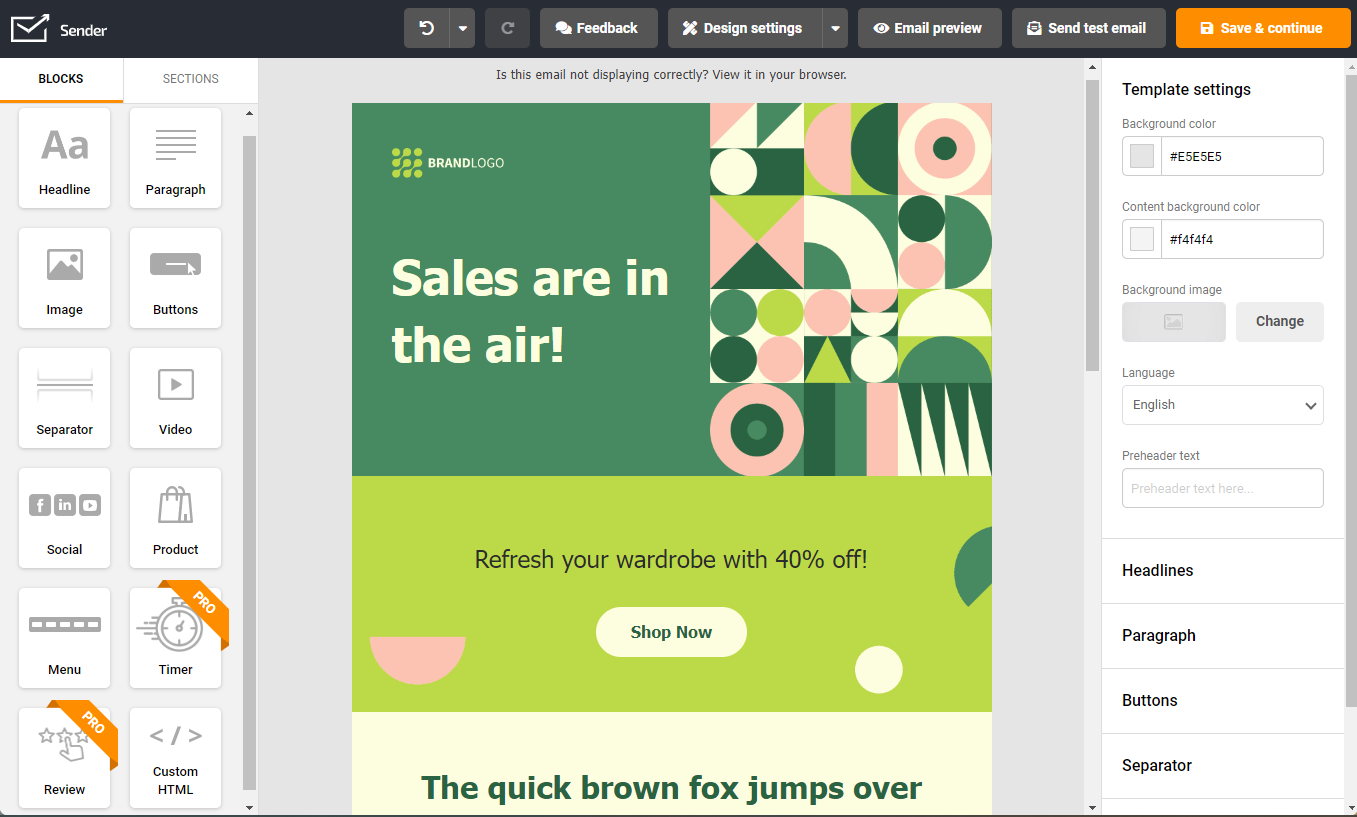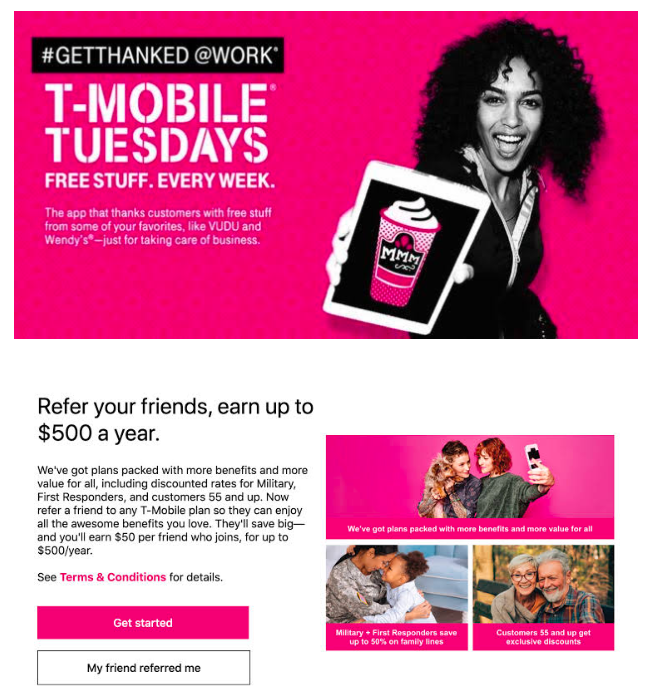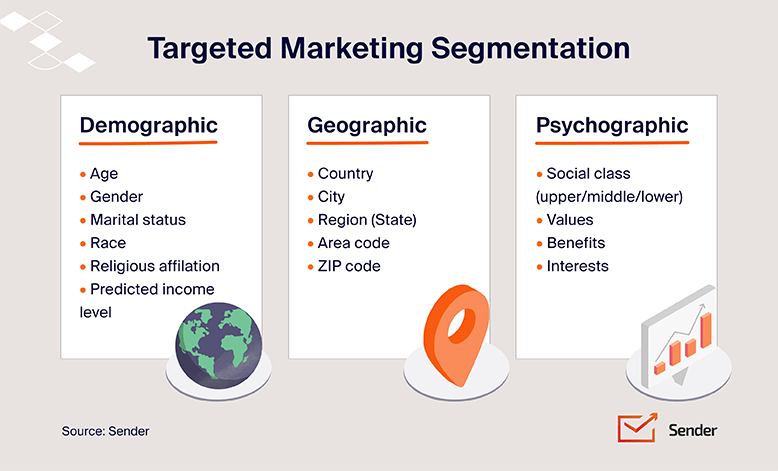When it comes to modern marketing, there’s good news and bad news. The good news?
It’s easier than ever to communicate with prospective and recurring customers.
The bad news? It’s often impersonal communication that can make a customer feel devalued.
Customers who don’t have a personal connection to a business won’t think twice about switching to a competitor. However, with relationship marketing tactics, you can create personal connections and improve the user experience.
But what is relationship marketing? Why is it so important for modern businesses? And what strategies can you use to foster positive relationships that improve the customer experience?
Read on to find out.
What is Relationship Marketing?
Relationship marketing is a mix of marketing tactics companies use to build lasting customer relationships. It involves methods for improving customer experiences and focuses on attaining long-term customer loyalty by getting customers emotionally involved with the business.
The main goal of customer relationship marketing is to ensure and sustain repetitive sales by building customers’ confidence in the product.
It’s a complete departure from transactional marketing, which doesn’t pursue the customer after the first transaction. Instead, in relationship marketing, the purpose is customer retention by prioritizing customer satisfaction over sales.
The growing use of the internet has led to the development of several types of relationship marketing that any business should pursue. Companies may use social media platforms, email, text messaging, or websites online.
Importance of Relationship Marketing
Customer relationship management is beneficial for companies in both B2C and B2B sectors. The key components of relationship marketing are:
- Building customer loyalty. Building long-term relationships with customers ensures a personal connection with clients. As a result, customers have a sense of ownership, which pushes them to keep buying your brand. Loyal and engaged customers spend 23% more on average.
- Improved feedback from customers. Responding to positive and negative reviews appropriately and professionally shows prospects and customers that your company prioritizes communication and respect.
- Business sustainability. Brand relationship marketing is one of the best ways to make your business profitable for the long term. It’s a sustainable way of maintaining your position in the market by retaining old customers and attracting new ones through reliable referrals.
- Improving customer experience. Customer experience begins from when the customer encounters a sales agent to the delivery of the product and beyond. That’s best handled through relationship marketing, ensuring one-on-one interaction between the business and its customers.
- Improved sales from customer retention. The main goal of customer relationship cultivation is to improve sales and profitability. Relationship marketing ensures the retention of old customers and the attraction of new ones through organic referrals.
Despite these benefits, only 24% of businesses use relationship marketing as part of a marketing strategy.
This means that by implementing the strategies in the following section, you can put yourself ahead of 76% of modern companies worldwide.
Email marketing is great way to maintain your relationship with customers. Craft personalized newsletters in minutes with Sender’s drag-and-drop builder.

4 Relationship Marketing Examples by Popular Brands
Let’s take a look at some of the strategies used by popular brands to help inspire your own competitive edge.
Customer Relationship Management of Amazon
It’s not by accident that Amazon has become the top ecommerce marketplace worldwide, covering the U.S., Europe, Japan, Canada, and Australia. The image below shows how the company strategically targets its customers in personalized ways.

Here is how Amazon effectively utilizes relationship marketing in its work:
- Data-driven personalization: Amazon has an algorithm that captures customers’ interaction with the platform and displays products based on their interests;
- Responsive user experience: Their ecommerce platform is easy to use, as customers have no difficulty browsing their favorite products. Customers with complaints can get quick answers to their questions;
- Feedback: On the Amazon website, customers can share their experiences by leaving behind detailed, honest reviews. Review marketing plays a key role here, as positive reviews can influence future buyers and help boost product visibility and credibility.
Starbucks Customer Loyalty Strategy
From a humble business, Starbucks has revolutionized how people get their cups of coffee. The company showcases its well-known cup of coffee in its social media posts on Facebook, Twitter, Instagram, and Pinterest.
That’s accompanied by catchy taglines like “Inspiring and nurturing the human spirit – one person, one cup, and one neighborhood.” After reading that, you can’t help but fall in love with a Starbucks cup of coffee.
Starbucks also appeals to its female audience (and anyone who supports women) with the ad shown below. Its subtle colors and floral design lend a feminine feel, while the fine print explains the two female-oriented charities that will benefit from the fundraiser.

The company also takes every opportunity to send emails to inform its customers of the latest product offers and launches. It also uses social media platforms to contact its customers and answer questions.
T-Mobile Relationship Marketing Campaign
T-Mobile, one of the leading telecommunications companies in the US, has set out on an aggressive relationship marketing campaign that eliminates mobile service contracts to attract millennial customers.

Participants in the program have received weekly rewards and thank-you gifts from T-Mobile. Through the T-Mobile app, customers got opportunities to redeem rewards, resulting in enhanced engagement.
The company has experienced improved customer engagement and satisfaction, resulting in business referrals.
Coca-Cola Relationship Communication with Customer
Coca-Cola reaches out to its customers through heartfelt, memorable messages. It focuses on presenting the brand as a perfect refreshment for happy moments. In its advertising campaigns, Coca-Cola uses messages about family and friends.
In the “Share a Coke” campaign, the company embraced hyper-personalization by printing individual names on Coca-Cola bottles. Driven by the FOMO (fear of missing out), customers hunted for bottles featuring their own names as well as those of their friends, fostering a sense of connection and shared experience. The campaign worked like a charm.

But Coca-Cola manages to stand out from the crowd not just on messaging. Its elegantly designed bottle is one that people want to share with others.
Relationship Marketing Strategies
Here are seven strategies you can begin rolling into your ongoing marketing plan.
Customer Segmentation
Segmentation is a core pillar of relationship marketing. Every target audience has individual customer groups that want and need different things.
This includes differing pain points and communication preferences.

That’s why businesses segment customers into smaller sub-audiences.
For example, if you run a B2B productivity platform, you might target business owners as a whole.
Within that audience, you might have the following sub-groups:
- Project management companies struggling with time management;
- Human resource agencies that need more refined candidate organization;
- Content production agencies that are ready to streamline and automate internal workflows.
Each group also has differing communication preferences.
For example, some existing customers might prefer receiving content via email marketing, and some might prefer social media interactions, an informational blog post, or an explainer video posted on YouTube.
Once you understand your segments profoundly, you’ll need to craft a personalized outreach strategy for each one. Continue monitoring your segments’ needs and adjusting your strategy as they change.
Also read: What is Customer Segmentation? Definition, Examples & Tools
Customer Loyalty Programs
Loyalty programs strengthen relationships with customers and offer opportunities for personalization.
They incentivize return purchases by offering redeemable points for special deals, upgrades, or prizes.
Customer loyalty programs can keep your audience coming back for more.
For instance, you can track purchases and make individual recommendations for products and deals.
To give you a real-world example, Walmart’s loyalty program, Walmart+, provides:
- Free delivery for customers on products or grocery items;
- Mobile scan-and-go services;
- Savings on fuel services;
- Loyalty rewards.

It also creates shopping lists for customers based on previous purchases. The service even tracks in-store purchases made with the same card that’s connected to customers’ Walmart+ accounts.
This helps loyal shoppers keep buying items they need with ease.
Adapt the loyalty program you create for your business to align with your goals and your audience’s preferences.
For instance, if you run a SaaS app, you might offer free feature upgrades if a subscriber stays for three or more months.
Over time, you might also send them opportunities to unlock more rewards, such as:
- Discounts on annual plans;
- Free tickets to prestigious webinars;
- Access to exclusive content, like interviews;
- Free gated downloads, such as ebooks and guides.
Two-Way Communication
Communication is a give-and-take process. It’s not enough to simply receive feedback and comments from your audience. You must reciprocate and create a dialogue.
These conversations should occur across multiple platforms your target audience frequently uses. Some examples include:
- Strategic social media engagement;
- Mobile app push notifications;
- NLP Chatbot support;
- Email marketing.
For instance, consider Remote, a company streamlining global team management. Its blog topics mostly focus on contractors vs employees. Some blogs might use a comment section to create opportunities for back-and-forth dialog. However, Remote accomplishes this by sharing blog content on social media.
Sharing content through social media allows the audience to comment with their thoughts and questions. The company then responds, opening a dialogue that starts or strengthens customer relationships.

To follow suit, consider grabbing snippets from your blog posts and repurposing them across your marketing channels. Use these assets to open and engage in conversations your audience cares most about (Tip: If you run a B2B business, don’t skip LinkedIn!).
You can also use an AI NLP (natural language processing) chatbot tool to engage customers on your website 24/7.
A branded chatbot can help resolve issues and provide one-on-one support via your website, mobile apps, emails, and social media platforms to quickly answer your customers’ questions.
Go the extra mile by saving and monitoring these conversations. These touchpoints deliver rich customer data you can use to hyper-personalize your marketing strategy going forward.
Personalization
Marketing personalization helps build meaningful long-term relationships. It also makes marketing materials more actionable and trustworthy.
In fact, personalization improves email open rates by as much as 20%.
To make sure your content resonates with your target audience, it’s crucial to avoid irrelevant offers and messaging. Regardless of your goals, if they don’t align with your ideal customer, you’ll lose them.
Instead, focus on writing copy and presenting offers that match their past behaviors, purchases, and any contextual evidence you have. It’s also pivotal to demonstrate that you understand their pain points and have a solution to help them better than anyone else.
Use A/B testing to refine your email campaigns and determine what resonates most with your email subscribers.
Customer Retention Strategies
Relationship marketing can be instrumental in retaining customers.
The ultimate key to profitability is a sustainable base of returning customers. Getting a new customer is five times more expensive than keeping an existing one.
This doesn’t mean you shouldn’t focus on constantly bringing in new customers. But with strong retention, new customers add to your existing base and aren’t replacements for those who’ve left.
Fostering an environment that incentivizes repeat purchases and continues to engage customers should be a part of every relationship marketing strategy.
Customer Acquisition
Customer acquisition is vital for businesses of all sizes. Customer relationship marketing helps you create new connections with prospective customers and sets them up for future retention.
Here are some customer relationship marketing strategies you can empower your acquisition efforts with:
- Email marketing
- Tracking progress in a CRM
- External prospecting
- Social media marketing
- Targeted pay-per-click ads
- Implementing an AI chatbot
- Creating a business blog page
- Incentivized referral program
Customer Relationships
For your business to thrive, it must focus on building a relationship with every customer. Building trust means considering your customers’ abilities and disabilities, accessibility and inclusion.
Consider using tech advancements and a GDPR compliance scanner to create an inclusive website experience for your audience segments.
Integrating accessibility features throughout your website and social media content is important to avoid alienating customers with disabilities.
For instance, adding voiceovers to CapCut videos for TikTok or other social media posts is a great way to enable those with visual impairments to engage with your content.
An accessibility control panel on your website can help users create custom viewing profiles, such as “seizure-safe” and “ADHD-friendly.”
Other ways to help your customers feel seen and heard are:
- Use an AI chatbot to make customer support more accessible
- Offer additional self-service support options, like a knowledge base or resource center
- Provide translation tools to translate content and CS conversations into the user’s preferred language
- Use gender-neutral language to stay professional and avoid alienating anyone in your audience.
Key Takeaways
Using a strong relationship marketing strategy, both B2B and B2C organizations can successfully capture new prospects and retain current customers.
Here are a few common ways you can use relationship marketing strategies to keep your customers coming back for more:
- Gather and implement customer feedback;
- Provide proactive customer support;
- Create incentive-based loyalty programs;
- Set up targeted email marketing campaigns;
- Personalize every offer;
- Cultivate a strong social media community;
- Create a knowledge base for self-service support.
Also read:
- What is Omnichannel Marketing? Definition, Tips & Examples
- What is an Email Notification? Definition, Examples, Templates
- What is Direct Response Marketing? Elements, Strategies & Examples
Author bio
Joanne Camarce grows and strategizes B2B marketing and PR efforts at codeless.io. She loves slaying outreach campaigns and connecting with brands like G2, Wordstream, Process Street, and others.





